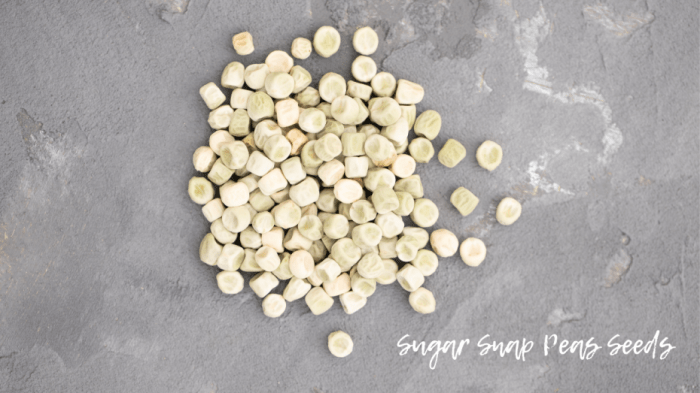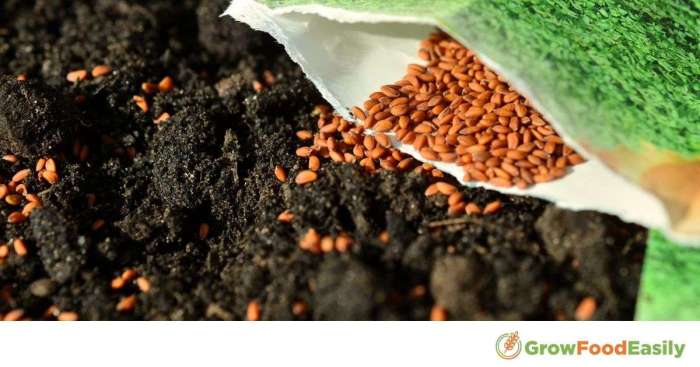Can You Plant Seeds After Expiration Date?
Seed Viability After Expiration
Can you plant seeds after expiration date – Seed viability, or the ability of a seed to germinate and grow into a healthy plant, decreases over time. Several factors influence how long seeds remain viable beyond their printed expiration date. Understanding these factors can help determine the likelihood of success when planting expired seeds.
Factors Affecting Seed Viability
Several key factors influence a seed’s viability after its expiration date. These include the inherent characteristics of the seed species, the storage conditions the seeds experienced, and the initial quality of the seeds themselves. Some species, like lettuce, tend to have shorter viability periods compared to others, such as beans, which can often remain viable for several years. Proper storage, including cool, dry, and dark conditions, significantly extends seed life.
Poorly processed seeds or those damaged during harvesting will naturally have lower germination rates regardless of storage.
Germination Rate Comparison
To illustrate the difference, let’s consider a hypothetical example. We plant 100 seeds of a particular vegetable before and after their expiration date. Before expiration, 85% germinate successfully. After the expiration date (assuming ideal conditions for both groups), we might observe a significant drop to only 40% germination. This showcases the decrease in viability over time.
The exact percentage would vary greatly based on the factors discussed above.
Seed Viability Testing Methods
Several methods can assess seed viability. These tests help determine the percentage of seeds likely to germinate, guiding planting decisions.
| Method | Description | Materials Needed | Expected Results |
|---|---|---|---|
| Germination Test | Seeds are planted under optimal conditions, and the percentage of germination is recorded. | Seeds, potting mix, containers, water | Percentage of seeds germinating; provides a direct measure of viability. |
| Tetrazolium Test | Seeds are soaked in a tetrazolium solution; viable seeds will show staining indicating metabolic activity. | Seeds, tetrazolium solution, petri dishes, water | Staining pattern indicating live (stained) versus dead (unstained) seeds. |
| Cut Test | Seeds are cut open to visually inspect the embryo for signs of life and health. | Seeds, sharp knife or blade | Visual assessment of embryo health, indicating potential viability. |
| X-ray Test | Seeds are X-rayed to assess the internal structure and identify defects or damage. | Seeds, X-ray machine | Images revealing internal seed structure, identifying viable embryos. |
Types of Seeds and Their Expiration Sensitivity
Different seed types exhibit varying degrees of sensitivity to expiration. Understanding these differences is crucial for successful planting.
Viability Across Seed Types
Vegetable seeds generally have shorter viability periods than flower or herb seeds. For example, lettuce seeds may only remain viable for a year or less, while some flower seeds can last for several years under proper storage. Herb seeds fall somewhere in between. These are general guidelines, and individual species within each category will vary.
Impact of Seed Size and Structure
Larger seeds, often with more stored food reserves, tend to have higher viability after expiration compared to smaller seeds. The seed’s structure also plays a role. Seeds with hard coats may remain dormant longer, potentially increasing their viability beyond the expiration date. This is because the hard coat protects the embryo from environmental stressors.
Organically Grown vs. Conventionally Grown Seeds
There’s no conclusive evidence suggesting a significant difference in post-expiration viability between organically and conventionally grown seeds. Both types of seeds are subject to the same environmental factors and degradation processes over time. Proper storage and handling are paramount for both.
Practical Considerations for Planting Expired Seeds
Planting expired seeds can still yield results, but requires careful consideration and preparation. The following steps and considerations can improve your chances of success.
Planting Expired Seeds: A Step-by-Step Guide
- Assess Seed Viability: Perform a germination test or visual inspection to estimate the viability of your seeds.
- Prepare the Soil: Use a well-draining, nutrient-rich soil mix. Ensure the soil is loose and allows for easy root penetration.
- Plant the Seeds: Plant seeds at the recommended depth, ensuring adequate spacing. Follow the instructions on the seed packet as a general guide.
- Water Gently: Water consistently to maintain soil moisture, but avoid overwatering, which can lead to rot.
- Provide Optimal Conditions: Ensure adequate sunlight and temperature based on the specific plant’s requirements.
Best Practices for Germination

Source: amazonaws.com
Pre-soaking seeds in warm water for a few hours before planting can help soften the seed coat and promote germination, especially for older seeds. Stratification, a process of exposing seeds to cold temperatures, can be beneficial for seeds requiring cold periods for germination. This mimics natural winter conditions.
Factors to Consider When Planting Expired Seeds
- Seed Type: Some seeds are naturally more resilient than others.
- Seed Quantity: Plant more seeds than usual to compensate for lower germination rates.
- Planting Conditions: Optimal soil, temperature, and moisture are crucial for success.
- Expected Results: Be prepared for lower germination rates than with fresh seeds.
Visual Representation of Seed Germination
Observing the visual differences between germinating seeds planted before and after their expiration dates provides valuable insight into the impact of seed age.
Visual Differences in Germination
Seeds planted before their expiration date typically show rapid and uniform germination. The radicle (embryonic root) emerges quickly, followed by the plumule (embryonic shoot). Root development is robust, and the seedling exhibits strong, healthy growth. In contrast, seeds planted after their expiration date may show delayed or uneven germination. The emergence of the radicle and plumule may be slower, and root development might be weaker.
Seedlings from expired seeds might appear smaller, less vigorous, and more susceptible to diseases.
Visual Comparison of Plant Growth
Imagine two groups of plants, one grown from fresh seeds and the other from expired seeds. The plants from fresh seeds will generally be taller, have more leaves, and display overall better vigor. The plants from expired seeds may be stunted, with fewer leaves and a less vibrant appearance. The difference in height could be substantial, with fresh seeds resulting in plants double or even triple the height of those from expired seeds.
Leaf development would also be noticeably different, with fresh seeds producing larger, healthier leaves.
Time-Lapse Illustration of Seed Germination

Source: b-cdn.net
While seed viability decreases after the expiration date, it’s not always a death sentence. Many seeds will still germinate, although germination rates may be lower. This is particularly relevant when considering fall planting, such as with lavender; to learn more about the optimal timing, check out this guide on can you plant lavender seeds in the fall.
Ultimately, experimenting with planting past-date seeds can be worthwhile, as some may still surprise you with their ability to sprout.
A time-lapse video would show the progressive changes in seed germination. For fresh seeds, the process would be relatively quick, with the radicle emerging within days followed by the plumule. The seedling would quickly develop leaves and grow steadily. For expired seeds, the process would be significantly slower. Some seeds might not germinate at all.
Those that do germinate would display slower root and shoot development. The time-lapse would clearly highlight the differences in germination rate and overall growth vigor.
Environmental Factors and Seed Germination
Environmental factors significantly influence the germination success of seeds, especially those past their expiration date. Optimal conditions are essential for maximizing germination rates.
Influence of Environmental Factors, Can you plant seeds after expiration date
Temperature plays a crucial role. Seeds have optimal temperature ranges for germination. Temperatures outside this range can inhibit or prevent germination. Moisture is equally important; seeds require sufficient moisture for imbibition (water uptake), a critical first step in germination. Light is also a factor, with some seeds requiring light for germination while others prefer darkness.
These requirements vary greatly depending on the seed species.
Effects of Different Soil Types
Soil type affects aeration, drainage, and nutrient availability. Well-draining soil is crucial to prevent rot, especially for seeds with lower viability. Nutrient-rich soil provides the necessary nutrients for seedling growth. Compacted soil can hinder root development, further reducing germination success.
Impact of Extreme Weather
Extreme weather conditions, such as prolonged periods of drought or excessive rainfall, can significantly reduce germination rates, especially for already compromised expired seeds. Heat stress can damage the embryo, while waterlogging can lead to rot and fungal diseases. These conditions can exacerbate the challenges of planting expired seeds.
Top FAQs: Can You Plant Seeds After Expiration Date
What happens to seeds after their expiration date?
Their germination rate decreases. Viability isn’t completely lost immediately, but chances of successful sprouting diminish over time.
Can I still use expired seeds for starting seedlings indoors?
Yes, but germination rates are lower. Starting more seeds than usual is recommended to compensate for potential failures.
How long can seeds remain viable after their expiration date?
This depends on the seed type, storage conditions, and initial seed quality. Some seeds may remain viable for several years past their expiration, while others lose viability much sooner.
Are organically grown seeds more sensitive to expiration than conventionally grown seeds?
There’s no definitive answer. While some studies suggest slight differences, the impact of organic versus conventional growing methods on post-expiration viability is often less significant than other factors like storage.





















